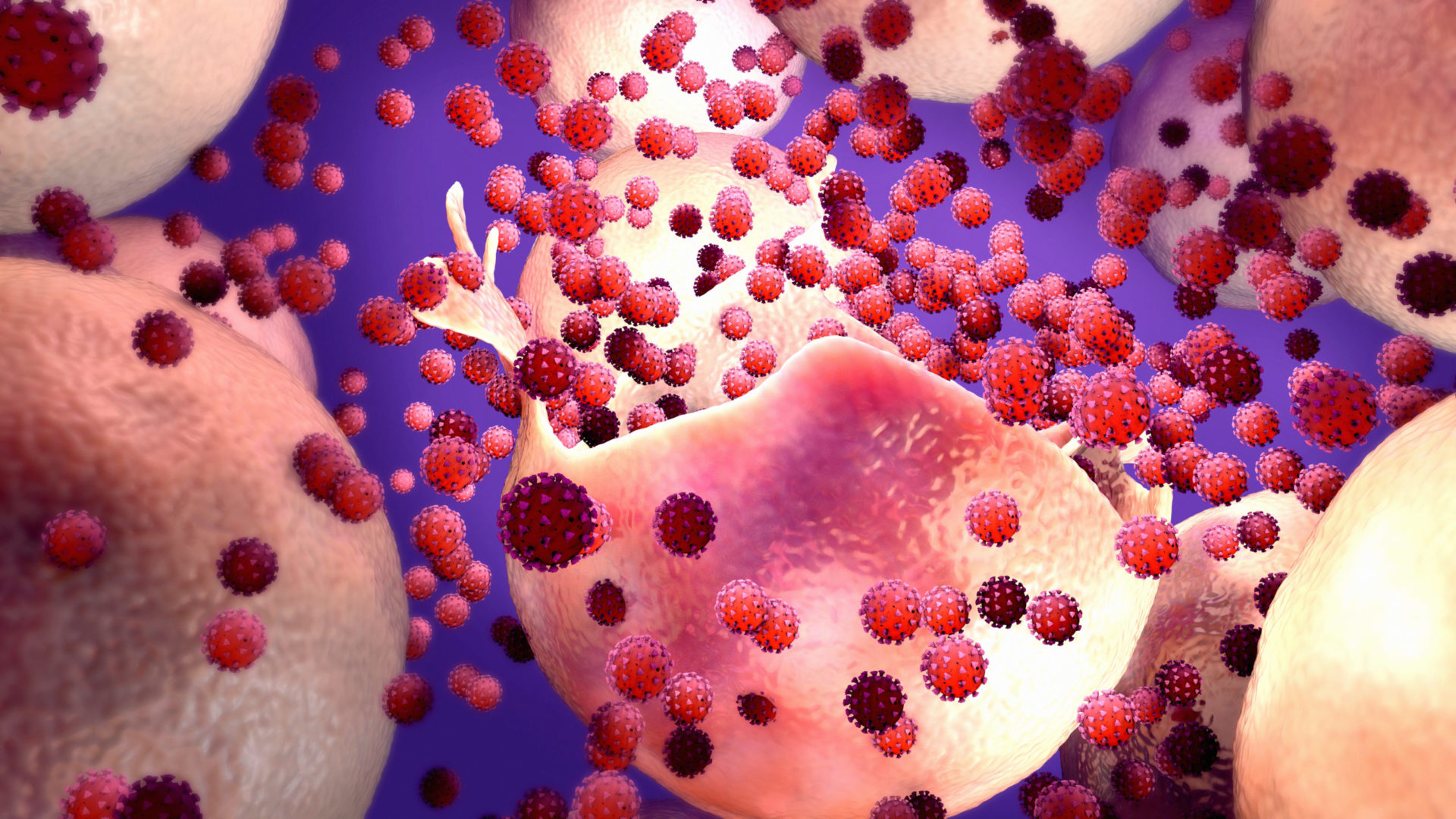HIV life cycle
HIV infects a specific type of white blood cell in the body’s immune system, called T-helper cells (or CD4 cells). These vital cells keep us healthy, fighting infection and disease.
HIV does not reproduce or grow on its own. Instead, the virus attaches itself to a CD4 cell and fuses with it. It then takes control of the cell’s DNA, reproduces inside the cell and then from there releases more HIV into the bloodstream – continuing the multiplication process. This is the life cycle of HIV.
In this way, HIV weakens the body’s natural defenses and, over time, severely damages the immune system. How quickly the virus develops depends on a person’s overall health, how quickly they are diagnosed and start treatment after infection, and how correctly they take their treatment.
Antiretroviral treatment and the HIV lifecycle
Antiretroviral treatment combines a range of drugs that target different stages of the HIV lifecycle, making it very effective. If taken correctly, it keeps the immune system healthy, prevents the development of symptoms and illnesses associated with AIDS, which means people can enjoy a long and healthy life.
If someone does not take their treatment correctly, consistently, resistance to the drugs can develop. This means that the drugs will no longer be able to prevent the virus from replicating.
Stages of the HIV life cycle
- Attachment and fusion
The virus attaches to a CD4 cell and releases HIV into the cell.
Fusion or entry inhibitor drugs stop this process.
- Conversion and integration
Once in the CD4 cell, HIV changes its genetic material so that it can enter the cell’s nucleus and take it over.
NRTIs (nucleoside reverse transcriptase inhibitors), NNRTIs (non-nucleoside reverse transcriptase inhibitors) and integrase inhibitor drugs stop this.
- Replication
The infected CD4 cell then produces more HIV proteins that are used to produce more HIV particles inside the cell.
- Assembly and maturation
The new HIV particles are then released from the CD4 cell into the bloodstream which then infects other CD4 cells; and so the process starts again.
Drugs that inhibit protease prevent this.
Note – knowing how HIV infects the body, people understand prevention and treatment options and why it is important to start antiretroviral treatment as soon as possible after testing positive.

